647. Palindromic Substrings 516. Longest Palindromic Subsequence
Given a string?s, return?the number of?palindromic substrings 回文子串?in it.
A string is a?palindrome?when it reads the same backward as forward.
A?substring?is a contiguous sequence of characters within the string.
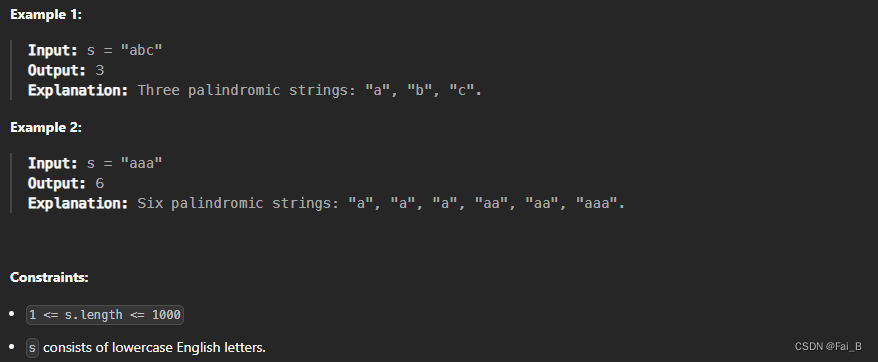
nomal:
Time complexity: O(n^2)
Space complexity: O(1)
class Solution:
def countSubstrings(self, s: str) -> int:
count = 0
for left in range(len(s)):
for right in range(left, len(s)):
if s[left : right + 1] == s[left : right + 1][::-1]: # wrong:[-1]最后一个字符
count += 1
return count
DP:
Time complexity: O(n^2)
Space complexity: O(n^2)
class Solution:
def countSubstrings(self, s: str) -> int:
dp = [[False] * len(s) for _ in range(len(s))]
result = 0
for i in range(len(s)-1, -1, -1): #注意遍历顺序
for j in range(i, len(s)):
if s[i] == s[j]:
if j - i <= 1: #情况一 和 情况二
result += 1
dp[i][j] = True
elif dp[i+1][j-1]: #情况三
result += 1
dp[i][j] = True
return result?2 pointer:
Determining the palindrome string is a matter of finding the center and then spreading it out to both sides to see if it is symmetrical.
When traversing the central point, it is important to note that there are two cases of central points.
One element can be used as the center point, and two elements can be used as the center point.
Time complexity: O(n^2)
Space complexity: O(1)
class Solution:
def countSubstrings(self, s: str) -> int:
result = 0
for i in range(len(s)):
result += self.extend(s, i, i, len(s)) #以i为中心
result += self.extend(s, i, i+1, len(s)) #以i和i+1为中心
return result
def extend(self, s, i, j, n):
res = 0
while i >= 0 and j < n and s[i] == s[j]:
i -= 1
j += 1
res += 1
return res516. Longest Palindromic Subsequence
Given a string?s, find?the longest palindromic?subsequence回文子序列's length in?s.
A?subsequence?is a sequence that can be derived衍生 from another sequence by deleting some or no elements without changing the order of the remaining elements.

1. dp[i][j]: the length of the longest palindrome subsequence of the string s in the range [i, j] is? ? ? ? ? ? ? ? ? ? ? ? dp[i][j].
2.?If s[i] is the same as s[j]: then dp[i][j] = dp[i + 1][j - 1] + 2;
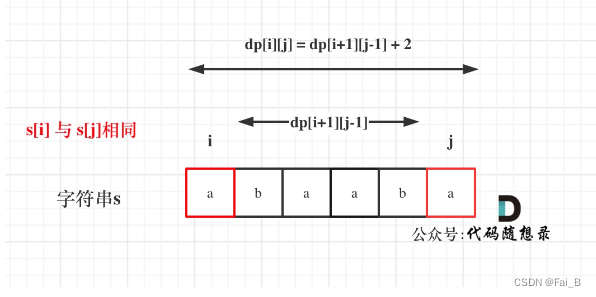
3. If s[i] is not the same as s[j]:?then dp[i][j] must be taken to be maximal,
? ? ? ? ?????????????????????????????????????????????????????????????????????????dp[i][j] = max(dp[i + 1][j], dp[i][j - 1]);
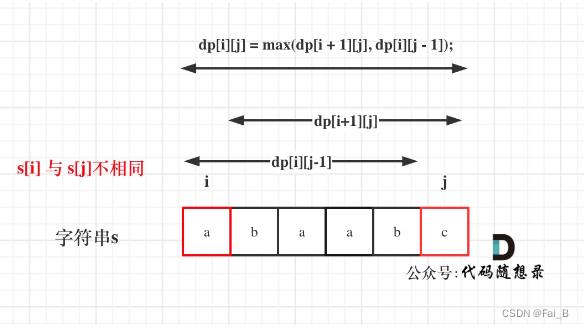
?4.?Determine the traversal order
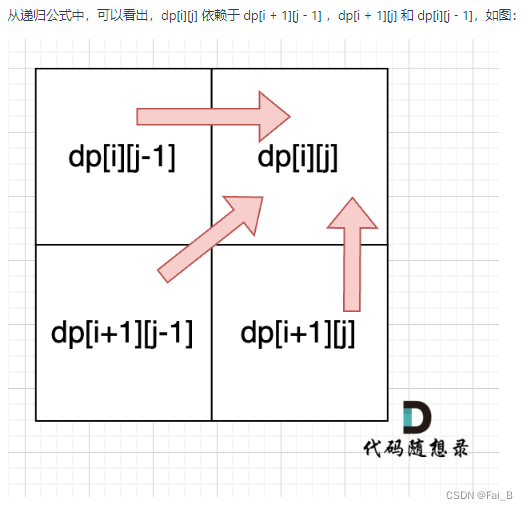
5. initial?
? ? for i in range(len(s)):
? ? ? ? ? ? ? dp[i][i] == 1
6. return
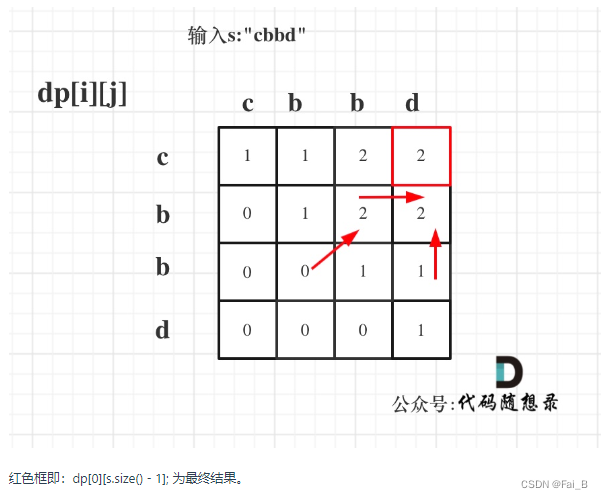
DP:?
Time complexity: O(n^2)
Space complexity: O(n^2)
class Solution:
def longestPalindromeSubseq(self, s: str) -> int:
dp = [[0] * len(s) for _ in range(len(s))]
for i in range(len(s)):
dp[i][i] = 1
for i in range(len(s)-1, -1, -1):
for j in range(i+1, len(s)):
if s[i] == s[j]:
dp[i][j] = dp[i+1][j-1] + 2
else:
dp[i][j] = max(dp[i+1][j], dp[i][j-1])
return dp[0][-1]dfs:
class Solution:
def longestPalindromeSubseq(self, s: str) -> int:
n = len(s)
# 使用记忆化搜索实现
@cache
def dfs(i, j):
if i > j:
return 0
if i == j:
return 1
if s[i] == s[j]:
return dfs(i + 1, j - 1) + 2
else:
return max(dfs(i + 1, j), dfs(i, j - 1))
return dfs(0, n - 1)本文来自互联网用户投稿,该文观点仅代表作者本人,不代表本站立场。本站仅提供信息存储空间服务,不拥有所有权,不承担相关法律责任。 如若内容造成侵权/违法违规/事实不符,请联系我的编程经验分享网邮箱:veading@qq.com进行投诉反馈,一经查实,立即删除!